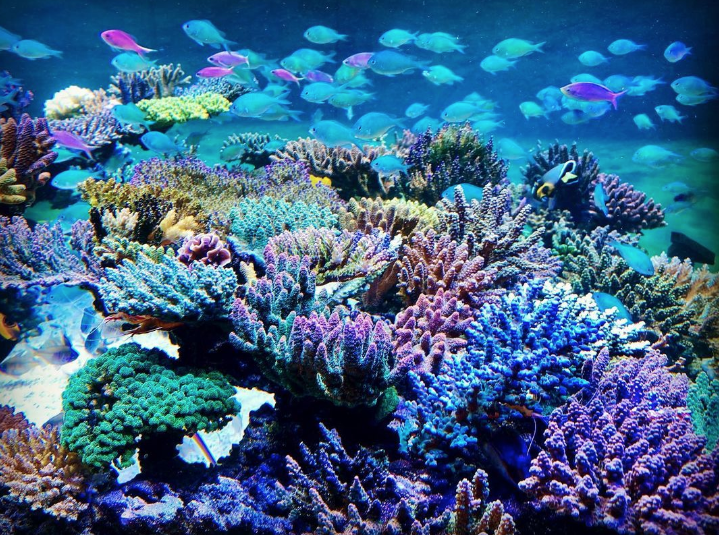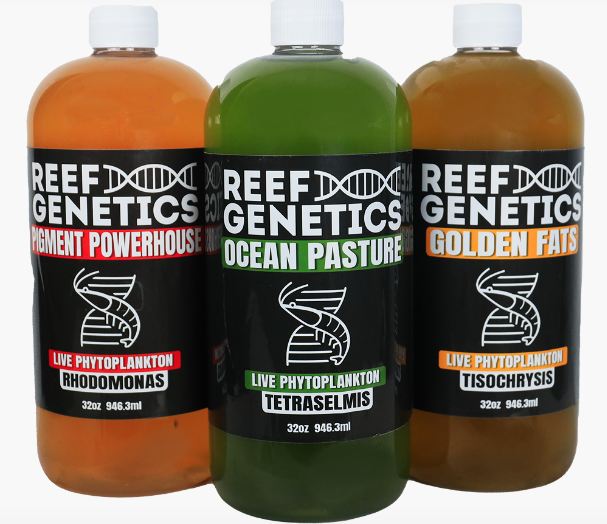You wanna know how Phytoplankton really works in your aquarium? We asked Phycologist Taras V Pleskun.
Which reef aquarium corals and other animals can ingest, and benefit from Phytoplankton?
Microalgae are the nutritional foundation of all marine ecosystems. They are one of the few sets of organisms that can make various nutritional compounds (fats, carbohydrates, pigments, etc.). All other forms of marine life forage, feast and fight to harness the nutrition created by these living nanofactories.
Wild tropical coral reefs rely heavily on nightly planktonic forage. Various filter-feeding organisms have the ability to collect phytoplankton cells directly from the water column. This makes live phytoplankton an invaluable tool for those attempting to keep things like juvenile Tridacna clams or Electric scallops long term. Phytoplankton is also readily consumed by a wide array of zooplankton (copepods, rotifers, ciliates, etc.).
Regular dosing of live phytoplankton drives secondary blooms of these microfauna, which become ‘gut-loaded’ with microalgal nutrition. Pulses of zooplankton act as direct forage for organisms incapable of directly grazing on microalgae. This relationship has become the basis of nearly all marine aquaculture. Without aquaculture microalgae, it would be impossible to rear sensitive marine larvae into charismatic reef fish and invertebrates.
Not all microalgae cells dosed in a reef aquarium will be consumed immediately. The green chlorophyte, Tetraselmis, for instance, can form a ‘pseudo stalk’ when light is stressed. This allows it to loosely attach to the substrate, where it can become forage for snails, urchins, amphipods, and other biofilm grazers. There is also rising evidence that suggests that phytoplankton cells can survive and perform beneficial operations in the gut microbiomes of herbivorous fish, such as tangs and rabbitfish.
Further evidence suggests that some non-Symbiodinium phytoplankton species may also be able to operate within the holobiont of corals and other endosymbiotic organisms. So in short, (alive or dead) are the basis of all nutrition we feed into our reef aquariums and the origin of every critter we put into them.
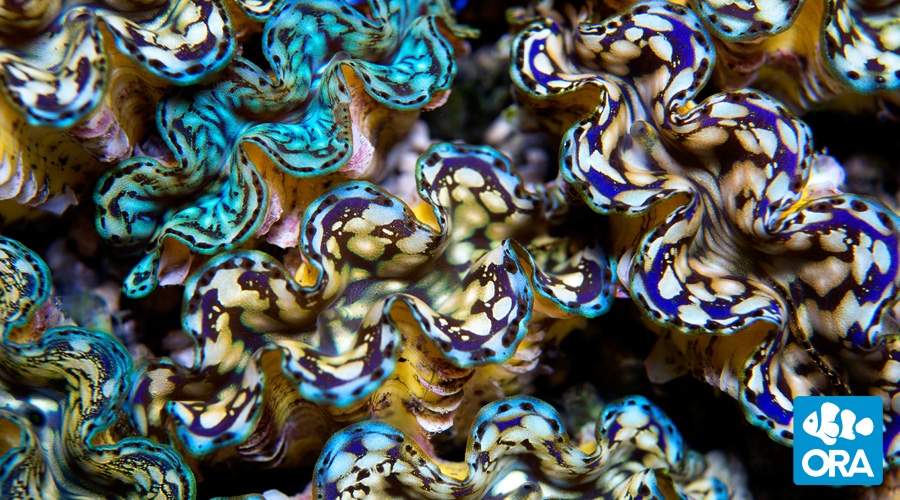
Do I want red or green phyto?
Firstly, it should be noted that each microalgae species is unique. No two species or strains have the exact same nutritional profile or special abilities. There are phytoplankton that produce precious golden fats (ARA, EPA DHA), these are what make fish and krill oil so valuable. There are also phytoplankton which make neurotoxins and are responsible for mass fish kills.
Knowing what strain of microalgae you are purchasing is paramount to the purposeful application of phytoplankton. Currently, I produce three species of microalgae (Tisochrysis lutea, Tetraselmis chui, and Rhodomonas salina). I have chosen these species along commonly desirable characteristics:
I. The ability to survive and thrive at average reef aquarium parameters.
II. To be highly nutritious and digestible.
III. History, having been successfully applied in commercial aquaculture.
Each of these species has individual desirable traits that complement the others. For example, all three species have good fatty acid profiles separately…but a superb one when combined together during a feed. Tisochrysis is designed to be a giant reservoir of golden fats but is relatively deficient in the cholesterols needed by larger marine organisms (especially crustaceans).
Luckily, Tetraselmis is incredibly high in valuable methylene cholesterols, while having a shade of T-ISO’s fat content. The red microalgae Rhodomonas is especially interesting because it produces high concentrations of pigments such as beta-carotene and phycoerythrin. Besides being the ‘building blocks of color’, these pigments are rarely broken down when consumed by other organisms but fused within the fat of their cells. This means that feeding high concentrations of valuable pigments can and will produce novel colorations and health benefits in a wide range of organisms.
So in general, feeding a diversity of phytoplankton species is largely beneficial as each particular strain has its own abilities and benefits. To know the particular abilities of each species is to be able to decide on the right…color palette.
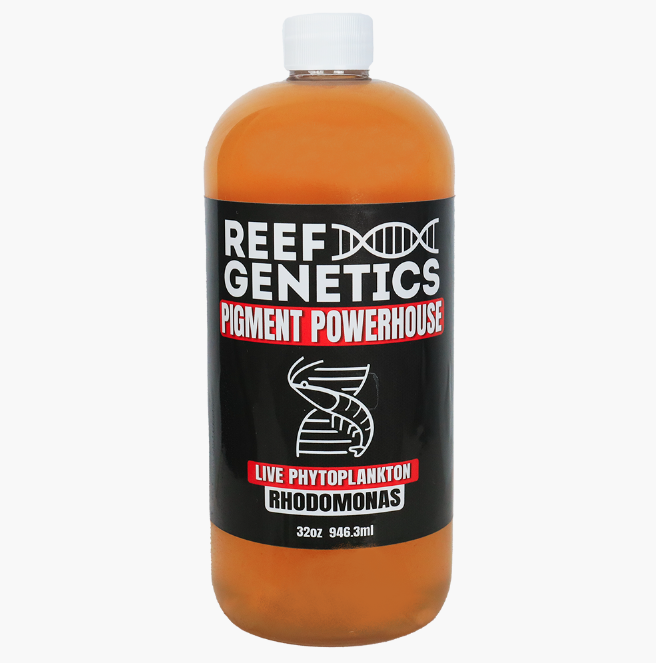
How often should I feed phyto, and how much?
This entirely depends on the particular goals of the aquarist. An aquaculture production tank will have an entirely different feeding regime than a desktop display aquarium. It also entirely depends on the species of organisms being fed, the species of phytoplankton applied, and the concentration of that culture. As a general rule, I encourage smaller feedings at frequent intervals.
Periodic versus episodic dosing of live phytoplankton is a better way to maintain prolonged levels of atmospheric cells alive in the aquarium. This promotes elevated and more stabilized populations of copepods and other beneficial microfauna. Prolonged feeding of live microalgae is also a great way to feed and promote the recruitment of snails, shrimp, urchins, sea cucumbers, and other invertebrate larvae. It is also a great way to prolong states of feeding stimulation in corals.
In general, it is very difficult to overdose these particular microalgae species without darkly tinting the water of the aquarium. That being said, I have drafted a generalized dosing chart for my phytoplankton, which discriminates between fish-only, lightly stocked, and heavily stocked reef aquariums.
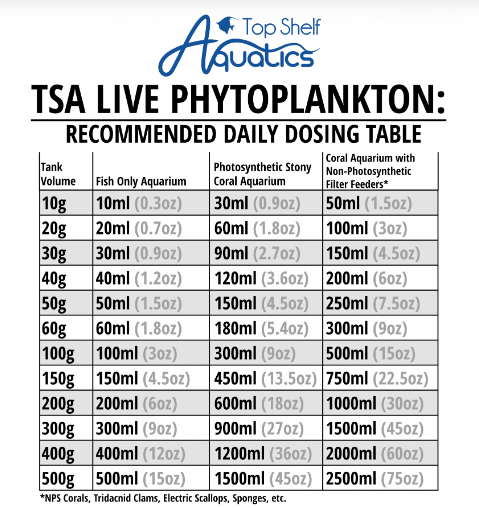
Does a filter sock/roller filter/protein skimmer/UV sterilizer remove/kill phyto?
In general, filtration is designed to produce ‘clear water’ and this involves the killing of planktonic organisms. UVs directly kill microalgae and therefore I recommend reducing their use when dosing phytoplankton. Filter socks will not prevent microalgae cells from passing through, but dirty socks likely are full of pest filter feeders which will aggressively attenuate valuable phytoplankton.
For this reason, I recommend a clean, broad-meshed sock (or going sockless) at least for 24 hours around a heavy phytoplankton feed. Protein skimmers remove algae as well, but this can be made advantageous. One could conceivably leave their skimmer off and then aggressively dose green phytoplankton such as Tetraselmis or Nannochloropsis.
The green phytoplankton would grow and what cells that were not foraged by the tank’s inhabitants would consume surrounding nitrates and phosphates. After a time, the skimmer could then be reactivated… and all the green phytoplankton would be skimmed…along with the nutrients now packaged in their cells. Phytoplankton could be an efficacious means of exporting bioassimilated nutrients.
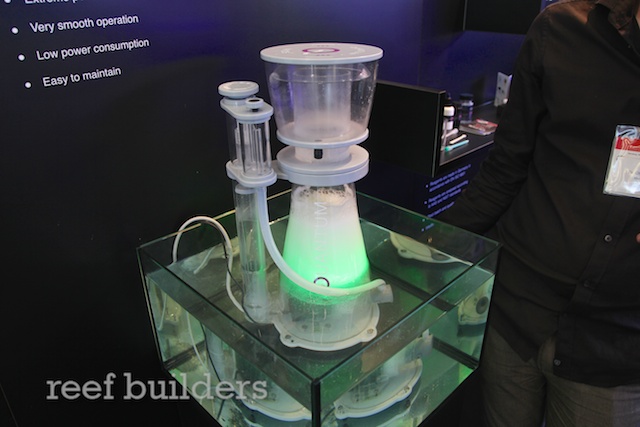
Can phytoplankton actually live in a tropical saltwater aquarium if not eaten or filtered out?
Absolutely! Various marine phytoplankton species are more than happy to exist under the conditions of the average reef aquarium. In fact, high levels of blue light are associated with fat synthesis in many microalgae species. Even more exciting, is that the ‘shock’ of going into a relatively nutrient-starved environment, triggers rapid fat storage in species such as Tisochrysis. This means that microalgae are at a peak nutritional state when they enter the greater reef aquarium ecology.
However, TISO is, by design, a defenseless, hovering ‘chocolate chip cookie’ of golden fats. It is by no means expected to persist in even lightly stocked aquariums for prolonged periods of time. Tetraselmis, on the other hand, has bigger, faster cells and is likely able to persist longer in most reef aquariums. Ungrazed phytoplankton cells are unlikely to grow to any point that they become visible, but every second they persist in the reef aquarium is one where they participate in biofiltration.
Phytoplankton are not only capable of consuming phosphates and nitrogenous wastes through photosynthesis but heterotrophically consume organic wastes when unilluminated. This is the beauty of ‘pulsing’ a tank with living microalgae: a peak of feeding activity is achieved as the majority of phytoplankton cells are consumed relatively instantly….but there is great potential for a lasting nutritional resonance as surviving cells modulate waste product and convert them back into lipids, fast, bioactive vitamins and the other essential molecules of life.
